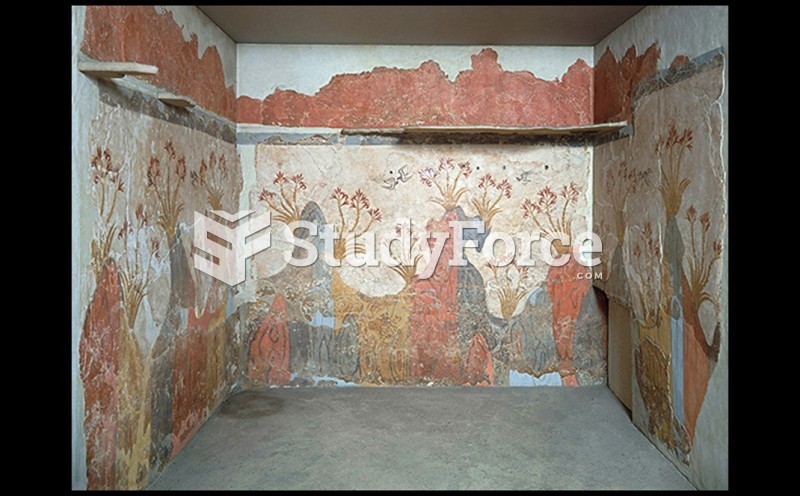Answer to Question 1
The Minoan Toreador fresco is one of numerous surviving frescoes that give the impression of a lighthearted, cheerful people devoted to games and sport. The flat, stylized figures reinforce the experience of action with their tumbling figures and the curving sway of the bull's back and underbelly. The Egyptian wall painting from the tomb of Nebamun represents a hunting scene with the large figure of the hunter in keeping with the Egyptian stylized convention depicting the body. The birds and other creatures are painted with exact biological precision, conveying Egyptians' love of detail. The composition employs the use of hierarchical scale, the largest figure being the most important, and suggests this is a male due to the dark coloring. The other, smaller figures are female, as indicated by the lighter, yellowish hue, color being a convention to depict gender.
Answer to Question 2
Archeologists discovering tombs and cultural artifacts raise ethical questions as to their actions in regard to these sites and their contents. The question is, regardless of who opens a tomb and removes the contents, whether it is a thief or a trained historian, is that person violating the intentions of those who sealed the tomb? Perhaps the difference is the motives of the perpetrators, as thieves will sell the objects and archeologists will place them in museums for all to see. The basic issue is the clash of cultural values. It was a cultural practice for Egyptians to bury their artworks with the dead. For historians and archeologists, it is a waste to lock all of a culture's beauty and historical material away forever, and they want to bring the heritages of cultures to light. Perhaps no one would want to return the treasures to their original site to be sealed up. Inevitably our cultural values prevail as we exist in the present and those in the past belong to us.







